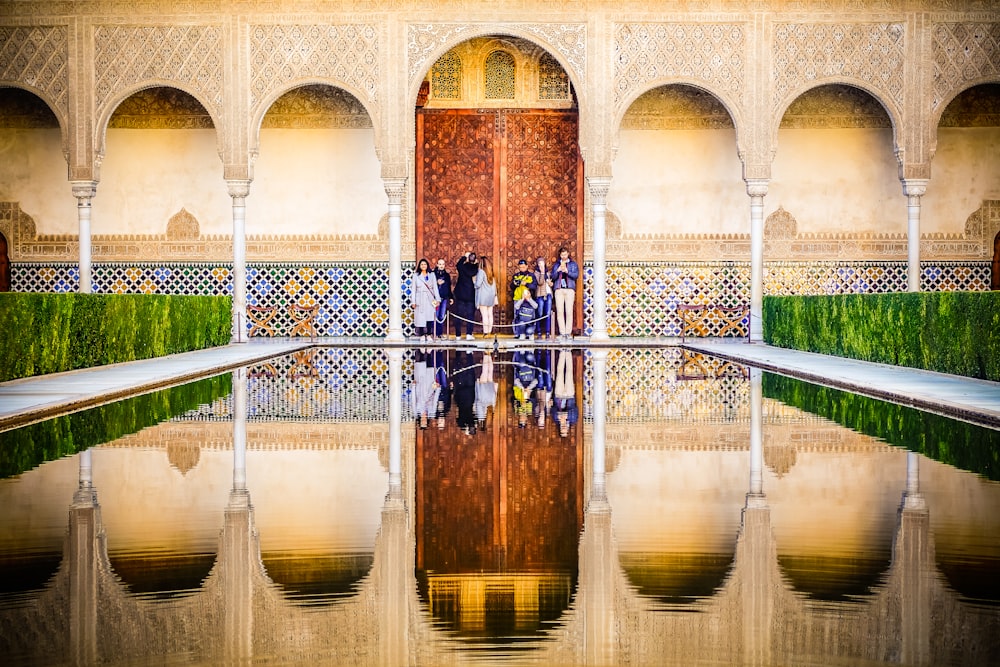Moorish Marvels Architectural Splendor of the Islamic World

Sub Heading: A Legacy of Architectural Brilliance
Step into the world of Moorish architecture, where every arch, tile, and courtyard tells a story of intricate craftsmanship and artistic genius. Spanning centuries and continents, the architectural splendor of the Islamic world leaves an indelible mark on history. From the majestic Alhambra to the ornate mosques of Andalusia, Moorish marvels stand as timeless testaments to the rich cultural heritage of the Islamic civilization.
Sub Heading: The Magnificent Alhambra: Jewel of Granada
At the heart of Moorish architecture lies the Alhambra, a UNESCO World Heritage site and one of Spain’s most visited landmarks. Perched atop a hill overlooking the city of Granada, the Alhambra is a breathtaking fusion of Islamic artistry and architectural splendor. Its intricate carvings, geometric patterns, and tranquil courtyards transport visitors to a bygone era of Moorish royalty and elegance.
Sub Heading: Courtyards of Tranquility: The Alcazar of Seville
In the southern Spanish city of Seville, the Alcazar stands as another masterpiece of Moorish architecture. Its lush gardens, ornate fountains, and intricate tilework create a sense of tranquility and beauty. As visitors wander through its halls and courtyards, they are enveloped in a world of serenity and elegance, where every detail speaks of the Moors’ love for symmetry and harmony.
Sub Heading: The Splendid Mosque-Cathedral of Cordoba
In the historic city of Cordoba, the Mosque-Cathedral stands as a symbol of Moorish architectural ingenuity. Originally built as a mosque during the Umayyad dynasty, the structure later underwent expansions and additions under Christian rule. The result is a stunning blend of Islamic and Christian elements, with its iconic horseshoe arches, intricately carved columns, and a soaring bell tower that once served as a minaret.
Sub Heading: The Enchanting Alcazaba of Malaga
Overlooking the Mediterranean Sea, the Alcazaba of Malaga is a fortress-palace that showcases the Moorish influence in southern Spain. Its fortified walls, ornamental gardens, and stunning views of the sea make it a must-visit for architecture enthusiasts. As visitors explore its labyrinthine pathways and hidden courtyards, they are transported to a world of Moorish grandeur and sophistication.
Sub Heading: Granada’s Generalife Gardens: A Paradise on Earth
Adjacent to the Alhambra, the Generalife Gardens are a verdant oasis of beauty and tranquility. Dating back to the 14th century, these lush gardens were designed as a retreat for the Nasrid rulers of Granada. Water features, terraced landscapes, and fragrant blossoms create a sensory experience that captivates the soul. As visitors stroll through the gardens, they can almost hear the whispers of a bygone era.
Sub Heading: The Legacy of Moorish Spain: Artistry and Innovation
Moorish architecture in Spain not only left behind magnificent structures but also a legacy of artistry and innovation. The use of intricate geometric patterns, arabesques, and muqarnas (stalactite-like decorations) became hallmarks of Moorish design. These architectural elements not only served a decorative purpose but also had symbolic meanings, reflecting the Islamic beliefs and values of the time.
Sub Heading: The Alhambra’s Nasrid Palaces: Jewel Boxes of Intricate Design
Within the Alhambra, the Nasrid Palaces stand as jewel boxes of intricate design and unparalleled beauty. The Palacio de los Leones (Palace of the Lions) with its iconic courtyard adorned with lion sculptures and delicate stucco work, remains a masterpiece of Moorish artistry. The Palacio de Comares, with its exquisite ceilings and elaborate tilework, speaks of the opulence and sophistication of Moorish royalty.
Sub Heading: Islamic Architecture Beyond Spain: A Global Influence
The influence of Moorish architecture extends far beyond the borders of Spain, reaching into North Africa, the Middle East, and beyond. In Morocco, the ancient city of Fez boasts a labyrinthine medina filled with mosques, madrasas, and riads that showcase the intricate tilework and geometric patterns of Moorish design. In Egypt, the Ibn Tulun Mosque in Cairo stands as one of the oldest and largest mosques in the world, a masterpiece of Islamic architecture.
Sub Heading: Moorish Revival: The Influence of Islamic Design
Even today, the legacy of Moorish architecture continues to inspire architects and designers around the world. The Moorish Revival movement of the 19th and 20th centuries saw a resurgence of interest in Islamic design, particularly in Europe and the United States. Buildings such as the Alhambra-inspired Alhambra Theatre in Bradford, England, and the Moorish-style Alcazar Theater in San Francisco pay homage to the timeless elegance of Moorish design.
Sub Heading: Preserving the Moorish Heritage: A Testament to Timeless Beauty
As we marvel at the splendor of Moorish architecture, it becomes clear that these structures are not just buildings—they are living testaments to a rich cultural heritage. Through centuries of change and upheaval, Moorish marvels have stood the test of time, their beauty and elegance captivating generations of admirers. Preserved as UNESCO World Heritage sites and cherished by locals and visitors alike, these architectural treasures continue to inspire wonder and awe, inviting us to step into a world of timeless beauty and splendor. Read more about moorish architecture








![Unlocking Real Estate Success [Company Name] Unlocking Real Estate Success [Company Name]](https://images.unsplash.com/photo-1583142499515-db3e66a57bdc?fm=jpg&q=60&w=3000&ixlib=rb-4.1.0&ixid=M3wxMjA3fDB8MHxzZWFyY2h8N3x8cmVhbCUyMGVzdGF0ZSUyMGludmVzdG1lbnQlMjBjb21wYW55fGVufDB8MHwwfHx8Mg%3D%3D)